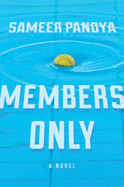
| Publisher: | Mariner | |
| Genre: | Cultural Heritage, Family Life, Humorous, General, Fiction | |
| ISBN: | 9780358379928 | |
| Pub Date: | July 2020 | |
| Price: | $15.99 |
| Starred | Fiction |
by Sameer Pandya
Members Only, the first novel by Sameer Pandya (author of the story collection The Blind Writer), is as provocative as it is comedic. In a horribly misguided attempt to bond with the first people of color since his own admission into a suburban Los Angeles tennis club, Raj's well-intended but inexcusable use of a slur sets off what will clearly be the worst week of his life. As a Bombay-born Indian American, Raj was the lone member of color at the Tennis Club. His welcome was indirect--because he's his white wife's brown spouse. Raj currently serves on the membership committee, vetting prospective new couples. He's especially thrilled to meet Bill and Valerie Brown--an African American power couple sponsored by the (white) Blacks.
Their appearance inspires "big, friendly grins," until Bill's modesty about his Stanford tennis days elicits Raj's utterly inappropriate response. Yet as dire as Raj's faux pas is, none of his co-members are willing to acknowledge the ongoing racist incidents Raj regularly faces. From the courts to the classroom, Raj's university teaching career next takes a downturn when a student films parts of Raj's cultural anthropology lecture about the West and Christianity and the clip--misrepresented and out of context--lands on a conservative website. The consequences snowball quickly and, no, that's not all.
Facing social, professional, personal implosion--all in one week--might seem impossibly overdramatic, but Members Only proves remarkably convincing. But without ever eliding the gravity of serious social issues like racism, privilege and power, Pandya deftly manages to create a tragicomedy of errors driven by surprising wit, irreverent humor and razor-sharp insight. --Terry Hong, Smithsonian BookDragon
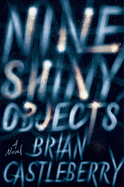
| Publisher: | Custom House | |
| Genre: | General, Literary, Political, Fiction, Historical | |
| ISBN: | 9780062984395 | |
| Pub Date: | June 2020 | |
| Price: | $27.99 |
| Fiction |
by Brian Castleberry
In Nine Shiny Objects, an atmospheric novel-in-stories, debut author Brian Castleberry probes prejudice and xenophobia in the U.S. against the backdrop of the Cold War decades.
In 1947, washed-up stage actor Oliver Danville leaves Chicago and heads west, afire with inspiration after reading a news story about a UFO sighting of nine shiny objects over Mount Rainier. He believes the saucer-shaped objects meant to bring humanity a message about a better future. By chance or fate, he meets a farming couple in Idaho who share his vision. Castleberry reveals the rest of their fate through sideways glances from strangers whose lives intersect tangentially or catastrophically with the Seekers'. By 1952, Oliver and company have founded a utopian commune in northern California, which readers see through the eyes of Claudette, a waitress who falls in love with Oliver's sister Eileen. Each new chapter skips ahead five years and belongs to a different protagonist: a suburban woman in a stale marriage, a young Black poet coming of age in the 1960s, a songwriter pulled into the hedonistic world of a young rock star who lost something irreplaceable the night the commune met its end.
Despite the premise's roots in the bumper crop of UFO sightings during the Cold War, readers won't find extraterrestrials here. Instead, Castleberry examines the ways in which humans can become aliens in their own lives and homes. Dark turns, desperate times and deliberately loose ends abound in this ambitious, provocative web of lives. --Jaclyn Fulwood, blogger at Infinite Reads
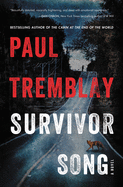
| Publisher: | Morrow | |
| Genre: | Psychological, Horror, General, Supernatural, Thrillers, Fiction | |
| ISBN: | 9780062679161 | |
| Pub Date: | July 2020 | |
| Price: | $27.99 |
| Mystery & Thriller |
by Paul Tremblay
Survivor Song is an eerily relevant horror novel following on the heels of Paul Tremblay's story collection Growing Things and his masterful The Cabin at the End of the World. Tremblay excels at short, breathless novels that pack a visceral and emotional punch, and Survivor Song is no exception. It is, essentially, Tremblay's grounded spin on zombie fiction, with the undead replaced by an outbreak of "super rabies" in Massachusetts. Tremblay's virus works like rabies, albeit dramatically sped up: within an hour, those infected become animalistic and violent. At eight months pregnant, Natalie is forced out of quarantine when a rabid man breaks into her house, kills her husband, and bites her on the arm. In a panic, she calls on her close friend Dr. Ramola (also known as "Rams") to help her get to a hospital.
Tremblay's scenario feels surprisingly realistic, especially in the Covid-19 world, where references to PPE and hospital capacity are all too familiar. Tremblay also has a great deal to say about the human and governmental failures that enable the virus's spread, including "a myopic, sluggish federal bureaucracy further hamstrung by a president unwilling and woefully unequipped to make the rational, science-based decisions necessary." More than that, though, the book is a story of survival. Rams and Natalie are constantly meeting new obstacles, from violent outbreaks in hospitals to a foolhardy militia, all with the ticking-clock that is Natalie's possible infection pushing them forward. Unsettling parallels aside, Survivor Song is a breakneck, frightening test of what two people can overcome. --Hank Stephenson, manuscript reader, the Sun magazine
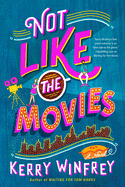
| Publisher: | Berkley | |
| Genre: | Women, Romantic Comedy, Romance, Contemporary, Fiction | |
| ISBN: | 9781984804044 | |
| Pub Date: | July 2020 | |
| Price: | $16 |
| Romance |
by Kerry Winfrey
Kerry Winfrey's quick-witted romantic comedy focuses on almost-30-year-old Chloe Sanderson, an overburdened bisexual whose life is in chaos. The Columbus, Ohio, native has a long-absent mother and a father with early-onset Alzheimer's who resides at an assisted living facility. Chloe's twin--her ne'er-do-well, charming, gay brother, Milo--ditched the family to pursue his own whims, leaving Chloe to bear all the responsibility for Dad.
Tending to her father, trying to finish up her degree and working at a coffee shop--while cultivating her penchant for baking pies--Chloe is also planning a wedding for her best friend, Annie, who scripted a rom-com loosely based on Chloe and Nick Velez, the handsome owner of the shop where Chloe works. With a trailer for the film released, media and townsfolk start nosing around the café, eager to draw parallels between Chloe and Nick, sizing up their fictionalized romance. The attention, coupled with a host of snags, including Milo's unexpected return to town, draws Chloe closer to the kind, supportive Nick. Is his attention what self-reliant Chloe has been secretly hungering for? Is she willing to surrender her conflicted heart?
Winfrey uncovers layers of her characters' lives and longings, burdens and passions. The cast was first introduced in her novel Waiting for Tom Hanks, but readers don't need to be familiar with that book to appreciate this one. Those who enjoy fast-paced, sparring banter will find much to savor in this sexy story where love may--or may not--conquer all. --Kathleen Gerard, blogger at Reading Between the Lines
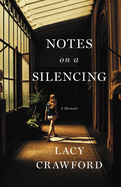
| Publisher: | Little, Brown | |
| Genre: | Biography & Autobiography, Women, True Crime, Sexual Assault, Personal Memoirs | |
| ISBN: | 9780316491556 | |
| Pub Date: | July 2020 | |
| Price: | $28 |
| Starred | Biography & Memoir |
by Lacy Crawford
The propulsive memoir Notes on a Silencing opens in October 1990, when Lacy Crawford, at age 15, was sexually assaulted by two star athletes at St. Paul's School in Concord, N.H.--described in the third person.
The facts carry readers along as they would in a crime novel, with clinical details that force observers to imagine the motives and emotions of the perpetrators and victim. Crawford then shifts to a first-person narrative. "What interests me," she writes, "is the near impossibility of telling what happened in a way that discharges its power." What follows is an exploration of power in its countless iterations: the power of peers, the power of teachers, of administrators, of alumni, of parents--and the power that a diploma from a storied school can bequeath unto its graduates. What is that diploma worth, and what would you endure to get it?
From that initial chapter describing the assault during the fall of her fifth form (or junior year), Crawford flashes back in the next chapter to her first days on campus the year before. She was fresh from Lake Forest, Ill. ("like the Greenwich of the Midwest," quips an older student from Connecticut) and newly exposed to the opulent wealth and worldliness of her classmates.
By toggling between the timelines before and after the book's central event, she conveys the universal experience of survivors--the divide between the person she was and the person she becomes afterward--and builds the narrative to the epiphany that unlocks her silence. --Jennifer M. Brown, senior editor, Shelf Awareness

| Publisher: | Houghton Mifflin Harcourt | |
| Genre: | Biography & Autobiography, Sports & Recreation, Surfing, Sports | |
| ISBN: | 9780358067788 | |
| Pub Date: | July 2020 | |
| Price: | $26 |
| Biography & Memoir |
by Diane Cardwell
Diane Cardwell grew up in a household where achievement reigned supreme, nothing short of perfection acceptable. Ninety-seven on a math test was met with one question from her father--"Why isn't it a hundred?" Unsurprisingly, she pushed herself to extremes to excel, becoming a reporter at the New York Times, marrying an equally driven man and setting out to create the perfect life. That blew up when her father died and a mid-life divorce caught her by surprise, seemingly sidelining her chances of having a child.
In Rockaway, Cardwell shares how she was saved from her longings for perfection by unlearning her father's lesson and facing failure over and over again by contesting a "liquid bully," the ocean. Watching a group of surfers from a bar in Montauk, she was dumbstruck, feeling as though she'd "stumbled upon a secret tribe of magical creatures." As she began dipping into the sport, taking lessons and renting a beach cottage, Cardwell was perpetually faced with her all too familiar fears of being pushed out of her comfort zone and not belonging.
What she ultimately found was that mastering the sport was not only impossible, but the least important part of her journey. Instead, the further she pushed herself, the more she discovered a life of meaning she never knew she wanted yet desperately needed. Rockaway is a thoughtful memoir of loss, self-discovery and what can happen when you hang on, literally and figuratively, to a piece of wood adrift in the sea. --Lauren O'Brien of Malcolm Avenue Review
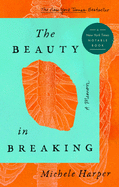
| Publisher: | Riverhead | |
| Genre: | Biography & Autobiography, Emergency Medicine, Inspiration & Personal Growth, Personal Memoirs, Body, Mind & Spirit, Medical | |
| ISBN: | 9780525537380 | |
| Pub Date: | July 2020 | |
| Price: | $27 |
| Biography & Memoir |
by Michele Harper
Michele Harper, an emergency room doctor and author of The Beauty in Breaking, devotes case-study-like chapters to patients whose stories spur Harper to draw connections between her work and the larger world. In "Dominic: Body of Evidence," the police haul in a Black man for allegedly swallowing bags of drugs and expect Harper, who is African American, to give him a physical exam without his consent, which she knows is against the law absent a court order; for Harper, this disregard for the man's rights recalls the despicable historical practice of performing medical experiments on nonconsenting Black men. In "Jeremiah: Cradle and All," Harper treats a 13-year-old who has come in with a head trauma--the upshot of a classmate's bullying. After the boy confesses that he owns a gun and intends to use it on his assailant, Harper is required to contact social services and wonders "why, in all my growing-up years, no physician had ever spoken to me alone, to ask if I was safe."
Harper grew up middle class in Washington, D.C., with a physician father who beat her mother. "The job of my youth had been to get out of that house and out of that life," Harper writes. She succeeded, although the celebratory mood of her graduation from an emergency medicine residency was dulled by the coinciding collapse of her marriage.
By the end of The Beauty in Breaking, fortified by the conviction that healing works both ways, Harper has found a restless peace working at a Philadelphia VA hospital, where the beguiled reader hopes that she will continue to gather insights and commit them to the page. --Nell Beram, author and freelance writer

| Publisher: | Harper Perennial | |
| Genre: | Biography & Autobiography, Travel, American, United States, Personal Memoirs, State & Local - General, General, Poetry, History | |
| ISBN: | 9780062870223 | |
| Pub Date: | June 2020 | |
| Price: | $16.99 |
| Biography & Memoir |
by Brian Sonia-Wallace
"Do you need a poem?" With this question, Brian Sonia-Wallace began his journey as the RENT Poet. Just "another unemployed millennial at the tail end of the financial crisis, looking for a purpose," he took a typewriter to a downtown Los Angeles street party and set up a folding chair and tray table with a sign: "POETRY STORE/ give me a topic/ I'll write you a poem/ pay me what you think it's worth."
When his first customer, a tough, tattooed, buzz-cut Chicana, softened before his eyes after reading his poem about her father, Sonia-Wallace was hooked. He "accidentally started a poetry business with a $20 garage sale typewriter and an impending sense of doom." Intending it as a performance art experiment slash practical joke, Sonia-Wallace proclaimed, "I'm going to pay my rent with poetry!" Since he was in despair and felt his life was over, why not do something stupid?
In The Poetry of Strangers, Sonia-Wallace shares how he not only paid his rent, but ended up with corporate jobs, Amtrak and Mall of America writer residencies, fundraisers, weddings and numerous other gigs. More interesting is that he'd never loved and doesn't consider his work poetry. It's about relationships, the "shrapnel interactions left behind, bits of other people" that left him less alone. While social connections were fraying, Sonia-Wallace traveled the country connecting with poetic empathy. "It was poetry that led [him] to discover a private America, an America where intimacy was possible, one person at a time." --Lauren O'Brien of Malcolm Avenue Review
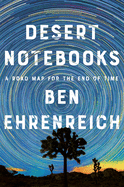
| Publisher: | Counterpoint | |
| Genre: | Nature, Biography & Autobiography, Wilderness, Personal Memoirs, Science, Folklore & Mythology, Anthropology, Social Science, Ecosystems & Habitats, Environmental Conservation & Protection, General, Cultural & Social, Deserts, Global Warming & Climate Change | |
| ISBN: | 9781640093539 | |
| Pub Date: | July 2020 | |
| Price: | $26 |
| Nature & Environment |
by Ben Ehrenreich
With its evocative blend of nature and travel writing, philosophy and history, journalist Ben Ehrenreich's Desert Notebooks: A Road Map for the End of Time merits favorable comparison with works like Annie Dillard's For the Time Being and broad swaths of recent writing by Rebecca Solnit.
Ehrenreich (The Way to the Spring) opens what reads like an enhanced collection of undated journal entries in November 2017. At the time, he and his partner shared a house in the California desert, only a few minutes from the entrance to Joshua Tree National Park. Several months later, he moves to Las Vegas to spend a semester at a literary institute. As he vividly describes it, there hardly could be a greater contrast between the "urgency, brilliance, and stubbornness of life" he comes to relish in the wild expanse of Joshua Tree and the soulless city of hotels and casinos carved from the "same desert, only paved."
But above everything, Ehrenreich's subject is time, or, more specifically, a critique of Western civilization's idea of progress. Citing the California wildfires of 2018 and the ocean rise that will swamp 153 million people by the end of this century, he argues that this "illusion of eternal, self-sustaining growth" has launched humankind on the path to eventual environmental destruction.
One comes away from Desert Notebooks not only with a deeper appreciation for some of America's wildest and most rugged spaces, but with a better sense of how we got to where we are and at least a glimmer of what an alternative path into the future might look like. --Harvey Freedenberg, freelance reviewer
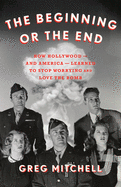
| Publisher: | The New Press | |
| Genre: | Individual Director, History & Criticism, Film, United States, 20th Century, Propaganda, History, Performing Arts, Political Science | |
| ISBN: | 9781620975732 | |
| Pub Date: | July 2020 | |
| Price: | $27.99 |
| Performing Arts |
by Greg Mitchell
Talk about a box office bomb. As cinema, the 1947 MGM docudrama The Beginning or the End--a factually lax justification for the United States' use of the atomic bomb on Japan--is arguably unworthy of the celluloid it was filmed with. But in the first-rate The Beginning or the End: How Hollywood--and America--Learned to Stop Worrying and Love the Bomb, Greg Mitchell sees the value in what can be gleaned from the money-losing, critically dispatched film's creation.
Although studio chief Louis B. Mayer thought The Beginning or the End would be "the most important story ever filmed," it was closer to the most difficult to make. The U.S. Army honchos and Manhattan Project scientists consulting on the film called for countless recasts, rewrites and reshoots, and even President Truman weighed in. As production dragged on, scientists watched as MGM bypassed their suggestions in favor of those of the military and the White House. Some prominent physicists, including Lise Meitner and Niels Bohr, refused to let themselves be depicted on-screen; J. Robert Oppenheimer and Albert Einstein capitulated.
Throughout The Beginning or the End, Mitchell (The Tunnels: Escapes Under the Berlin Wall and the Historic Films the JFK White House Tried to Kill) remains devoted to examining the U.S.'s moral defense for its deadly actions against Hiroshima and Nagasaki, but he never misses a chance to expose the comedy provided by his book's many theatrically outsize characters. Surely Mitchell's offering would make a much better movie than MGM's big-budget dud. --Nell Beram, author and freelance writer
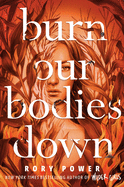
| Publisher: | Delacorte Press | |
| Genre: | Friendship, Mysteries & Detective Stories, Girls & Women, Social Themes, Young Adult Fiction | |
| ISBN: | 9780525645627 | |
| Pub Date: | July 2020 | |
| Price: | $18.99 |
| Starred | Children's & Young Adult |
by Rory Power
Relationships are at the heart of Rory Power's creepy thriller about three generations of women who bear an uncanny resemblance to each other.
Margot Nielsen's mother, Jo, is quick to fight, quick to flinch from affection and so deeply involved with her secrets that Margot mostly fends for herself. Mother and daughter look so much alike--down to the same streaks of gray at their temples--that Margot wonders where her mother came from, but Jo won't open up. " 'Nobody but you and me,' " her mother often repeats, "like a curse [they] can't shake." When Margot discovers an old Bible with a photo tucked inside and a phone number on the back, she immediately calls. Vera, her grandmother, picks up. Margot sneaks out that very night and hitches a ride to Phalene, a town three hours away. Hearing a report that "somebody lit the Nielsen farm on fire again," Margot races to the house. But before she arrives, Margot spots something in the cornfield along the road. She goes in to explore and pulls out a dead girl--a dead girl wearing Margot's face.
In her sophomore novel, Power (Wilder Girls) drives the dark investigation into one family's twisted roots with strong, suspenseful writing and pitch-perfect touches of horror. Margot, emotionally battered yet determined to find out where she came from, is compellingly tough when it counts, while Gram, who both embraces Margot and keeps her at arm's length, makes a worthy foil. The growing sense that something is dreadfully wrong will keep readers plowing through the pages of this eerie and unnerving tale of empowerment. --Lynn Becker, blogger and host of Book Talk, a monthly online discussion of children's books for SCBWI
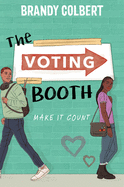
| Publisher: | Disney-Hyperion | |
| Genre: | Romance, Contemporary, Social Themes, Politics & Government, Young Adult Fiction, Prejudice & Racism | |
| ISBN: | 9781368053297 | |
| Pub Date: | July 2020 | |
| Price: | $18.99 |
| Children's & Young Adult |
by Brandy Colbert
Stonewall Award-winner Brandy Colbert (Little & Lion) rocks the vote with this sweet, politically minded YA romance about two teens who bond while attempting to cast their first-ever ballots.
Civil-rights-conscious Black high schooler Marva Sheridan has waited her entire life finally to vote and feels betrayed by her white boyfriend's last-minute decision to skip it in protest of the two-party system. Duke Crenshaw, whose father is Black and mother is white, feels obligated to vote in honor of his deceased big brother, Julian, a community activist. When Duke's car breaks down in the parking lot after he goes to the wrong polling place, Marva forcefully steps in to help. Duke is more concerned about his calculus test and drumming gig, but she assures him they have plenty of time. Their day turns into an avalanche of mishaps and surprises involving registration errors, family drama and the disappearance of Eartha Kitty, Marva's Instagram-famous feline. Duke falls hard for passionate, driven Marva, and she begins to appreciate his laid-back charm. However, both will have to address challenges in their personal lives if they want to live democratically ever after.
Colbert gently but thoroughly addresses the strain of grief, the relief of having someone to lean on and the importance of involvement even in an imperfect system. Filled with breezy banter that veers easily into deeper conversations about race, rights and the democratic process, this upbeat love story may inspire civic engagement and dreamy smiles, making it a must-have for high school libraries and romance fans. --Jaclyn Fulwood, youth services manager at Main Branch, Dayton Metro Library